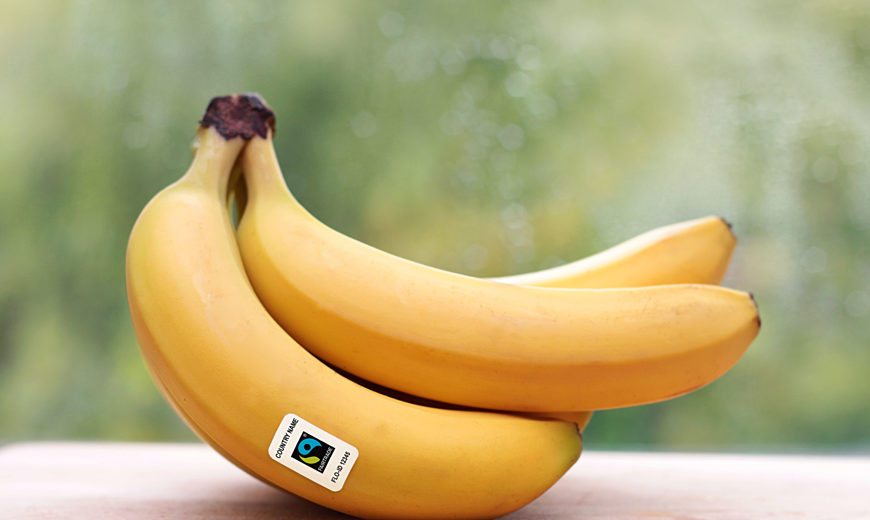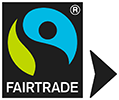The Fairtrade Sourced Ingredient model allows farmers and workers more opportunities to sell their produce on Fairtrade terms and gives companies greater flexibility to incorporate Fairtrade ingredients into their products, product ranges or even across their whole business. It also gives consumers more options to shop sustainably. Ingredients sourced under this model continue to be certified according to same Fairtrade Standards, and producers still receive all the same benefits.
The Fairtrade Marks
The FAIRTRADE Mark is the symbol of the international Fairtrade system – and the most globally recognized ethical label. When you buy products with any of the FAIRTRADE Marks, you support farmers and workers as they improve their lives and their communities.

Products bearing these Marks meet the internationally agreed social, environmental and economic Fairtrade Standards. The FAIRTRADE Marks are registered certification marks and trademarks owned and licensed by Fairtrade International.
See below for more information on the specific FAIRTRADE Mark found on your products.
The FAIRTRADE Mark

The original FAIRTRADE Mark has always stood for fairly produced and fairly traded products. It also means the product is fully traceable (kept separate from non-certified products) from farm to shelf. You see this Mark on single-ingredient products, such as bananas and coffee.

If you see the FAIRTRADE Mark with an arrow, it means to look on the back of the packaging to learn more about the ingredients and sourcing method.
This Mark with an arrow is used on products with multiple ingredients, such as chocolate bars or cereal. All the ingredients that are available under Fairtrade conditions have to be Fairtrade (e.g., all the cocoa, sugar and vanilla). The minimum total Fairtrade content is 20 percent but many companies go above and beyond that. You will find the percentages on the back of the pack.
This Mark is also used on single-ingredient products that have been sourced using “mass balance.” This is possible only for cocoa, sugar, fruit juice and tea. This means that companies purchase 100 percent of the volume of ingredients that they label as Fairtrade, but do not need to keep it separate and may mix it with non-Fairtrade ingredients at some point in the supply chain. The amount sold as Fairtrade must match the amount purchased. This way, the farmers and workers receive the full benefits of selling that amount of product on Fairtrade terms. Read more about mass balance here.
Specific Product Marks

Two products have their own specific Marks, gold and cotton. The FAIRTRADE Gold Mark stands for the fair extraction and trading of all of the gold used in a piece of jewelry, as well as the gold’s physical traceability throughout the supply chain. This certification may also be indicated by a stamp on the final piece of jewelry.
The FAIRTRADE Cotton Mark indicates that a product is made with raw cotton that has been fairly produced and traded, which is directly traceable through all stages of production and separated from non-Fairtrade cotton during processing. A blended fabric can carry this label if 100 percent of the cotton used in the blend is Fairtrade certified.

There is also a Fairtrade Textile Standard which mandates ethical production of a textile or piece of clothing – you may see a garment with tags that show it is both made from Fairtrade cotton and certified under the Fairtrade Textile Standard.
Fairtrade Sourced Ingredient Mark

These white Marks indicate that the ingredient named on the tab has been sourced as Fairtrade, such as Fairtrade cocoa in a breakfast cereal. (This is different from the black FAIRTRADE Mark, which signifies that all the ingredients that are available as Fairtrade are Fairtrade certified.)
In this sourcing model, the composite product carries these labels to indicate that the ingredient is Fairtrade certified, such as Fairtrade cashews used in a package of mixed nuts, or Fairtrade honey used in a cereal where the rest of the ingredients are not Fairtrade (even if they could be sourced as Fairtrade).
Up to two FSI Marks can be used on the front of the packaging. An arrow in a tab indicates that the ingredient was sourced using “mass balance” and points to more information on the back of the package.
The new Fairtrade Sourced Ingredient Marks cover all Fairtrade commodities, except for coffee and bananas.
The Fairtrade Sourcing Program Mark

This trio of Marks originated in 2014 and will be replaced by the Fairtrade Sourced Ingredient Mark above. For a while you might see both on your supermarket shelves.
The Fairtrade Sourcing Program was a first step in providing an additional way for businesses to commit to source one or more Fairtrade certified ingredients to use across product ranges or even their whole business. This sourcing model was only available for cocoa, sugar and cotton. As with the newer white Fairtrade Sourced Cocoa Mark, if you see the Fairtrade Cocoa Program Mark on a chocolate bar, it means that all of the cocoa is Fairtrade certified, while other ingredients, such as vanilla or sugar, may not be.
The Fairtrade Cotton Program Mark means that a business buys an agreed amount of raw cotton on Fairtrade terms to use throughout their product ranges. It means the cotton doesn't have to be kept separate, allowing businesses to scale up their Fairtrade commitment. The amount or percentage purchased is communicated clearly.
If you already have a signed license contract, click here to download the FAIRTRADE Mark Use Guidelines. In all cases, the use of any FAIRTRADE Mark whether on-pack or on promotional materials requires prior written approval from Fairtrade International or its designated licensing bodies, the national Fairtrade organizations.
WHERE ARE THE TRADEMARKS REGISTERED?
Fairtrade’s trademarks are registered in over 170 countries. All Fairtrade Marks, FSI Marks and all other individual trademarks or certification marks worldwide are registered or pending in the name of Fairtrade International. To have access to the latest registration updates including goods and services classes and territories, among others, please visit: https://www.connectfairtrade.org/en/documents